Conchoidal fracture is a fascinating phenomenon, admired by many rock enthusiasts for its visually distinctive and beautifully curved surfaces. Recognized for its significant role in both natural mineralogy and ancient craftsmanship, conchoidal fracture offers a window into the complexities of material science and the art of stone working.
In this guide, we will explore the essence of conchoidal fracture, its occurrence in minerals and rocks, its historical importance in ancient societies as well as in mineral identification.
What is Conchoidal Fracture?
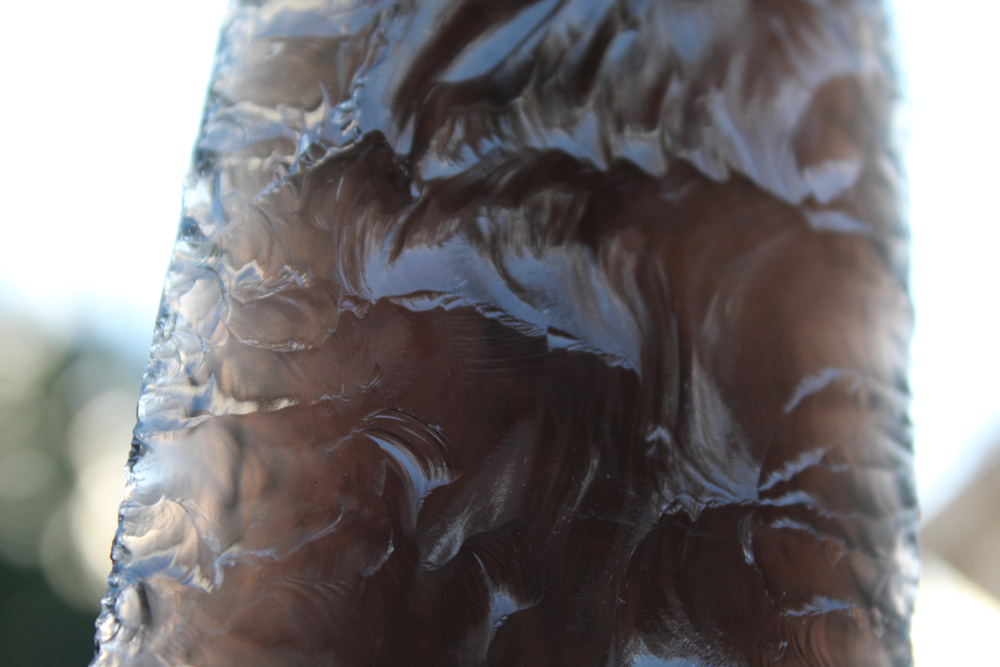
Conchoidal fracture refers to the way certain materials break in a smooth, curved pattern, reminiscent of the inner surfaces of a seashell. The term “conchoidal” itself comes from the Greek word konchoeidēs, meaning “like a mussel,” alluding to the shell-like appearance of these fractures.
Unlike cleavage, which involves breakage along specific planes within a crystal structure, conchoidal fracture occurs in materials that do not have defined planes of weakness. This type of fracture results in surfaces that are smoothly curved with undulating waves, often described as “dish-shaped” or “shell-like.”
Where Do Conchoidal Fractures Occur?
Conchoidal fractures are typically observed in materials with no cleavage planes and in those with very fine-grained or noncrystalline structures. Here are some common examples:
Varieties of Quartz
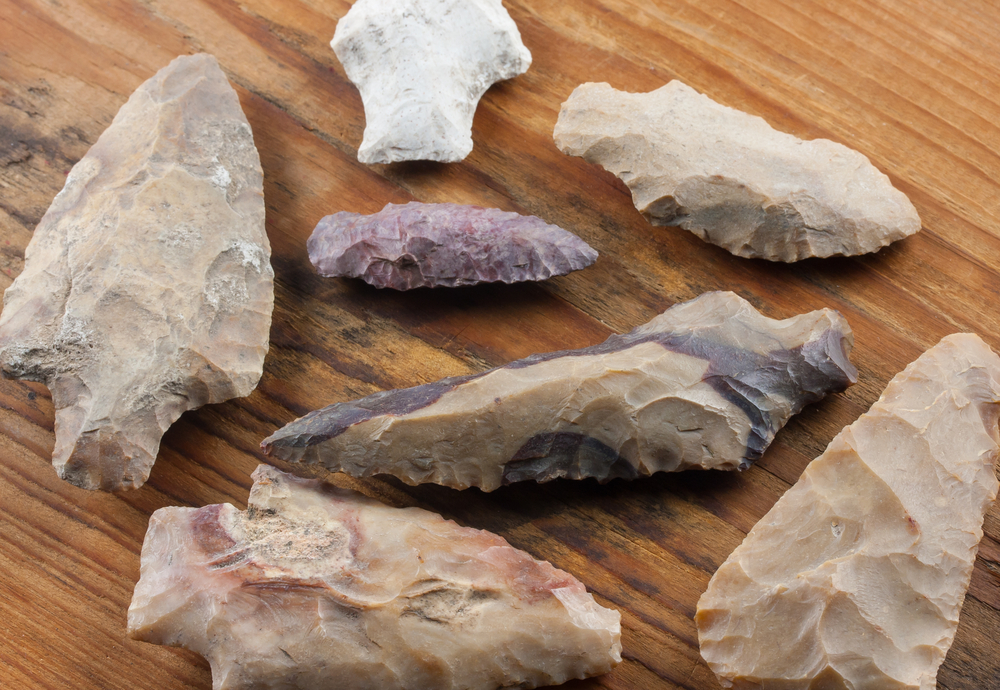
Varieties of quartz, such as flint and jasper are perhaps the most well-known minerals to exhibit conchoidal fracture, breaks in a characteristically smooth, curved manner due to its crystalline structure, which lacks cleavage planes. This absence of cleavage planes makes quartz susceptible to conchoidal fractures when impacted.
Known for its hard and durable nature, quartz’s Mohs hardness of 7 renders it somewhat brittle, causing it to fracture with these distinctive shell-like patterns under sufficient force. This quality has made flint invaluable throughout human history, particularly in tool-making, where its ability to produce razor-sharp edges through controlled conchoidal fracturing has been harnessed by flint knappers for millennia.
Obsidian
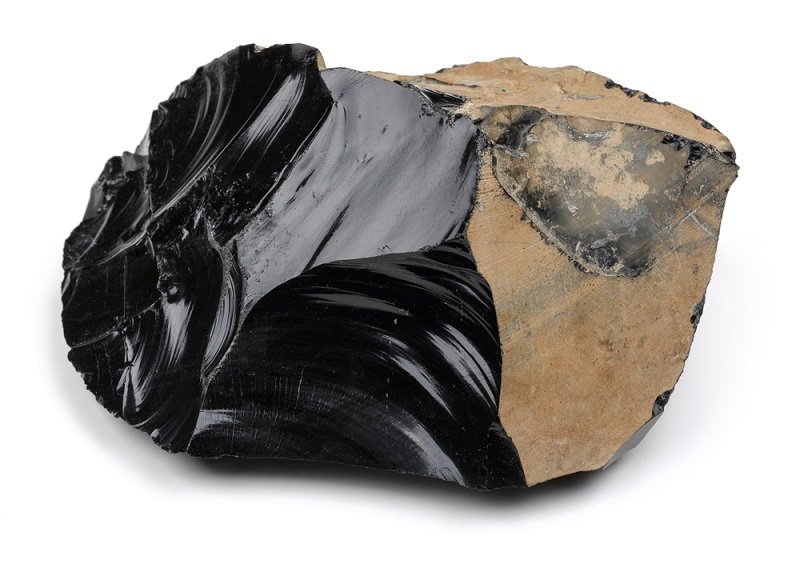
Obsidian, a volcanic glass, exemplifies a noncrystalline material that fractures conchoidally. Its smooth, glassy surface breaks along curved lines, creating sharp, shell-like edges that have made it highly valued throughout history. This ability to produce razor-sharp edges through conchoidal fracturing was especially prized by ancient cultures for making tools and weapons, as the fracture patterns allowed for precise and effective cutting edges.
Opal

A hydrated silica mineral, opal also displays conchoidal fracture. Its structure is noncrystalline, contributing to its unique breakage pattern.
Glass
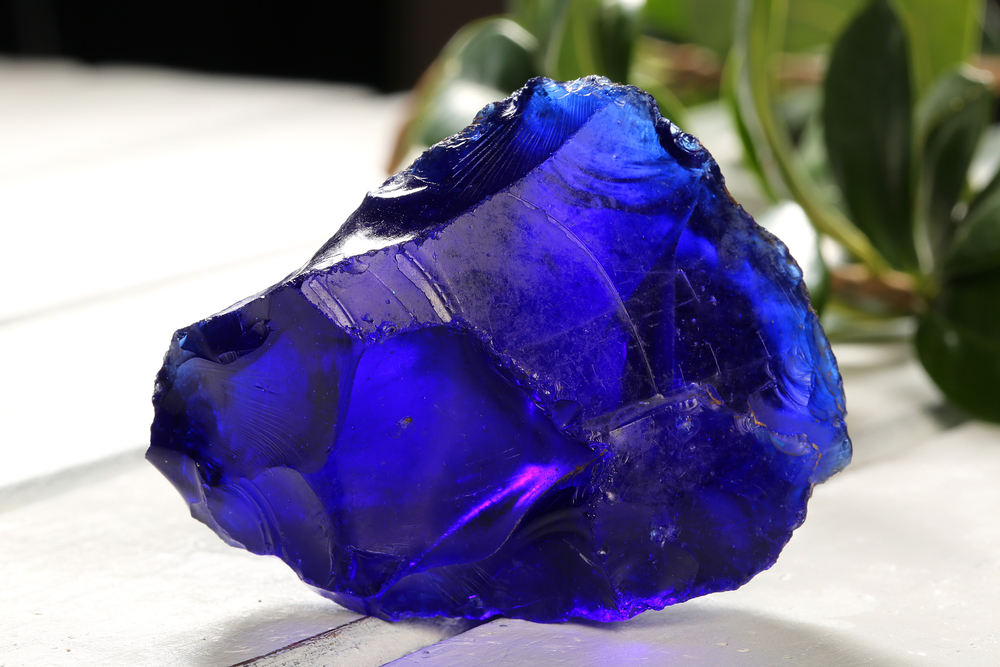
Both natural and man-made glasses fracture conchoidally. This property makes glass, including common bottle glass, useful for knapping (the process of shaping stone tools).
The Science Behind Conchoidal Fracture
The process of conchoidal fracturing involves a complex interplay of mechanical forces and material properties. Here’s how it works:
- Impact Initiation: When a hard, sharp object strikes the surface of a material capable of conchoidal fracture, it generates a point of impact where deformation begins.
- Shock Wave Propagation: The impact produces a shock wave of mechanical energy that travels through the material. This wave radiates outward from the point of impact.
- Energy Absorption: As the shock wave moves through the material, it loses energy. The material absorbs some of this energy, which helps to propagate the fracture.
- Fracture Direction: The fracture tends to follow the path of least resistance, often curving back toward the surface of the material. This is why conchoidal fractures have their characteristic concave shape.
Historical Significance and Survival
Conchoidal fracturing has been crucial in human history, especially in the area of prehistoric tool-making, such as arrowheads and cutting tools. Early humans discovered that materials like quartz and obsidian could be fractured in controlled ways to produce sharp edges and points. This discovery was foundational for the development of tools and weapons.
Flint Knapping
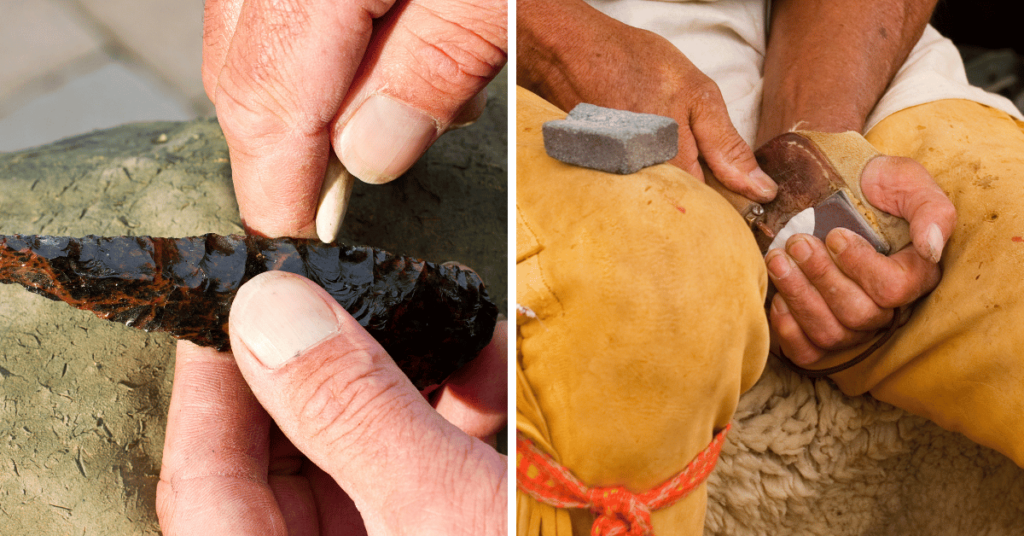
This is the ancient craft of shaping stone through controlled conchoidal fracturing. Flint knappers strike stones at specific angles to create sharp-edged tools. Mastery of this skill was essential for survival and technological advancement in prehistoric societies. Learn more about flintknapping here.
Conchoidal fracture is a captivating and scientifically rich phenomenon, showcasing nature’s ability to create intricate patterns and shapes through the simple act of breaking. From the glassy surfaces of obsidian to the practical tools of ancient flint knappers, understanding conchoidal fracture gives us a deeper appreciation for the materials around us and their histories.
Whether you’re a seasoned rockhound or a curious learner, observing and studying conchoidal fractures can provide valuable insights into the natural world and human history.
The Role of Conchoidal Fracture in Rock and Mineral Identification
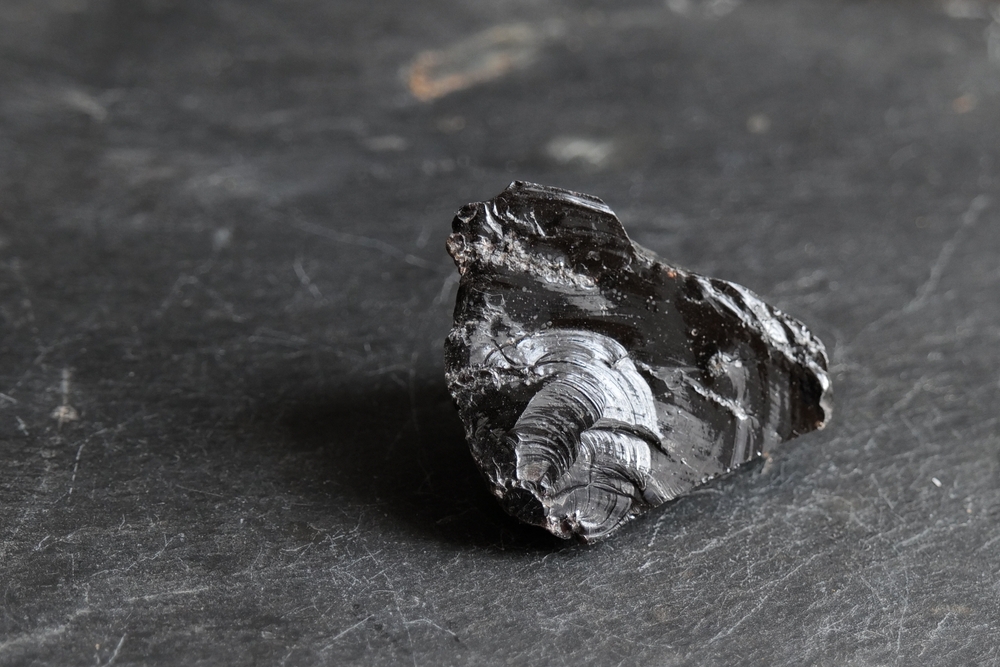
Conchoidal fracture is a crucial diagnostic feature in identifying minerals and rocks. Here’s why it matters:
- Distinctive Identification: Minerals like quartz, obsidian, and certain fine-grained rocks are easily recognized by their conchoidal fracture patterns. This smooth, curved breakage helps distinguish them from other minerals that fracture differently.
- Understanding Material Properties: The presence of conchoidal fractures indicates a material’s lack of cleavage planes and its homogeneous structure. This helps in assessing the material’s brittleness, strength, and suitability for various uses.
- Quick Field Diagnostics: Geologists and rockhounds often use conchoidal fracture as a quick and reliable identification tool in the field. Observing how a rock or mineral breaks can provide immediate insights into its identity and properties.
- Online rock and mineral club for collectors of all levels!
- Find community with like-minded rock and mineral enthusiasts.
- Monthly Giveaways!
- Free Access to Entire Digital Library of Products (annual memberships)


